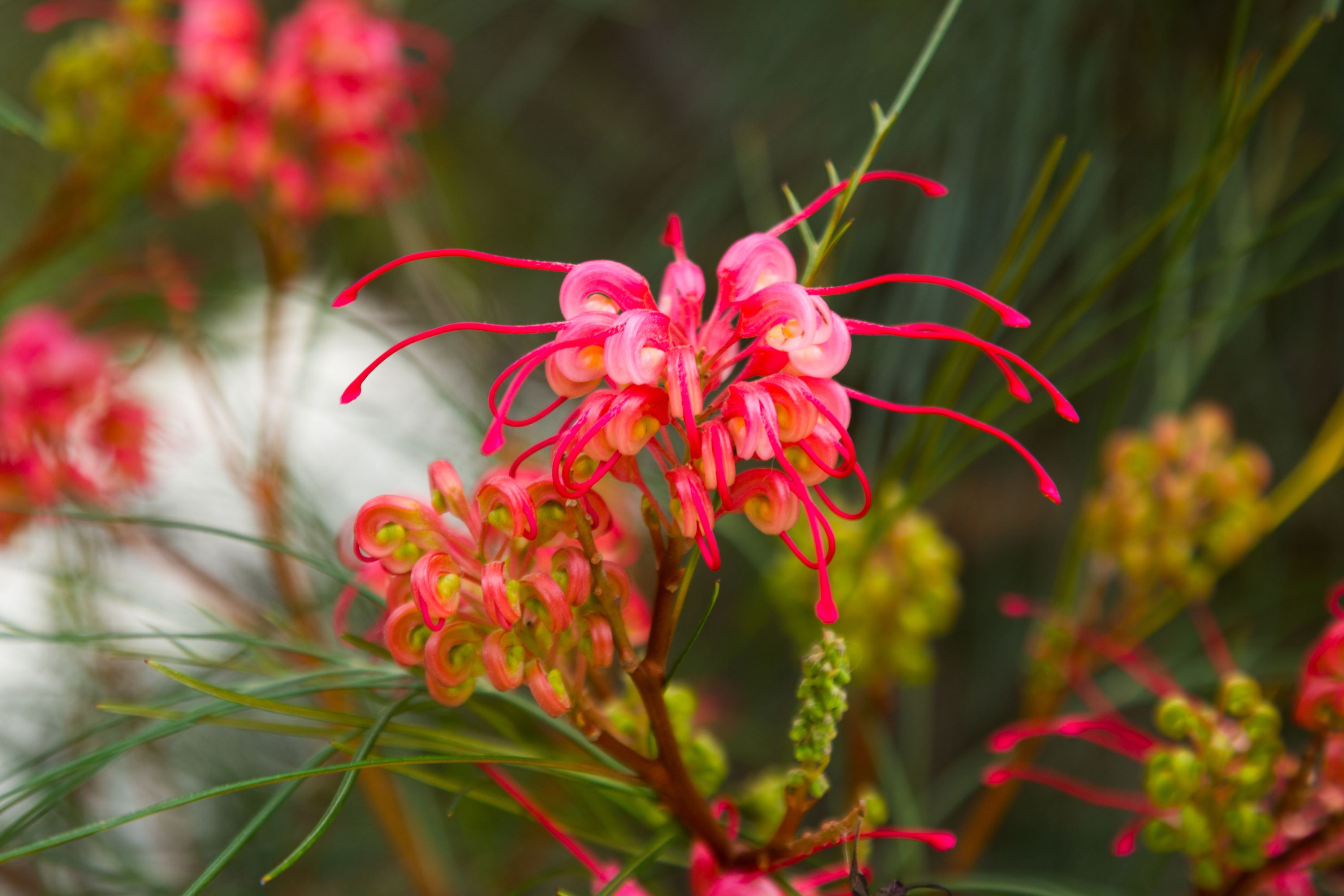Johnson's grevillea
(Grevillea johnsonii)

Description
Grevillea johnsonii, commonly known as Johnson's grevillea or Johnson's spider flower, is a species of flowering plant in the family Proteaceae and is endemic to New South Wales. It is a shrub with divided, needle-like leaves and red to orange flowers, and grows in rocky places. Grevillea johnsonii is a shrub that typically grows to a height of 2–4.5 m (7–15 ft) and has divided, almost pinnatisect leaves 100–250 mm (4–10 in) long in outline. The leaves have between five and ten, erect, linear lobes 0.7–1.5 mm (0.03–0.06 in) wide. The flowers are arranged in groups of between eight and ten flowers, 30–80 mm (1.2–3.1 in) long with a silky, red to orange perianth with soft hairs near the base. The gynoecium is 25–37 mm (1.0–1.5 in) long with a conspicuous, stalked, more or less spherical ovary. The style is red to orange with an oblique pollen presenter. Flowering occurs from September to November and the fruit is a hairy, more or less spherical follicle 10 mm (0.4 in) in diameter containing one or two seeds. The shrub species typically regenerates from soil stored seed. Grevillea johnsonii was first formally described in 1975 by Donald McGillivray in the journal Telopea from specimens collected by Lawrie Johnson near Kerrabee Mountain and the Sandy Hollow–Gulgong railway line. The specific epithet (johnsonii) honours the collector of the type material, "whose perceptive insights into the Australian flora have added considerably to our understanding of many plant families". The genus Grevillea was named after Charles Francis Greville, a patron of botany and President of the Royal Society. Johnson was a taxonomic botanist, Director of the Royal Botanic Garden, Sydney and also specialised in the family Proteaceae, to which Grevillea johnsonii belongs. Common names for this species include Johnson's grevillea and Johnson's spider flower. Grevillea johnsonii is endemic to New South Wales where it grows in rocky places on sandstone. The National Herbarium of New South Wales gives its distribution as "chiefly in the Goulburn and Capertee River catchments with a record from the Brogo River not verified". The Australian Native Plants Society suggests that the "common garden red and cream form" occurs near the Brogo River, whereas the orange-flowered form "grows naturally in the Goulburn River catchment at Cox's Gap and several other close by areas". The species grows natively at an altitude of 400-700m, where the annual rainfall is 600-700mm.
Taxonomic tree:







